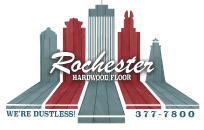HARDWOOD TYPES
Choosing a hardwood species for your floors, stairs, or decorative inlay can be a little intimidating. There are literally hundreds of species to choose from and you don’t want to pick a hardwood based on color alone. We’ve compiled a list of some of our favorite hardwood species based on stability, color, and ease of installation. Take a look here and feel free to call with specific questions about any hardwood species.
Oak
Heartwood is light brown to reddish brown (Red Oak) with sapwood of a light cream color. Oak is an exceptionally hard wood and accepts stain wonderfully with rich contrasts and varied grains. Oak species can vary distinctly in color depending on the region. Northern Red Oak is an extremely hard and durable wood. Other hardwoods are rated based on how they measure up to Red Oak’s stability.
Cherry
Softer than oak with above average stability. Cherry is a favorite among many homeowners. It sands and finishes well and the color darkens beautifully with age. Cherry is perfect in older Craftsman homes as well as contemporary houses.
Brazilian Cherry
A very popular import, Brazilian Cherry heartwood is a lovely orange-brown which seasons to a deep russet as it ages. Dark streaks and bold grain make this hardwood an ideal floor to add depth and warmth to your home. Brazilian Cherry is quite stable, though longer acclimatization is required than for some other species.
Bamboo
More and more homeowners and businesses are choosing bamboo floors for its many benefits and its natural beauty. Bamboo is an extremely renewable resource that can be harvested every 3-5 years and doesn’t deplete natural resources. Bamboo is 50% more stable than Red Oak and is as hard as maple.
Maple
Maple has been a favorite in homes for centuries due to its stability and durability. It is harder than red oak with a creamy white to reddish brown color which accepts neutral finishes very well though it can be hard to stain. Maple grain is tight and uniform with occasional quilted or birds-eye figuring.
Walnut
American Black Walnut is a popular wood often used in inlays or as a border in high-end hardwood applications. The heartwood has a rich reddish brown color which can vary to nearly black depending on the finish applied. Walnut has a straight grain with occasional curls. Walnut is softer than oak and less dent-resistant, though it has good stability and sands and finishes well.
Douglas fir
Douglas fir has a narrow near-white to pale straw sapwood, contrasting with a reddish to russet-brown heartwood. Knots are common, but tend to be tight and small. May change color with some finishing products, and care must be taken to avoid over sanding. It’s durable but easily dented.

Considerations When Choosing Hardwood Floors
You’ll find hardwood flooring that suits virtually any style. Here are some considerations to keep in mind when choosing your wood:
Species Hardness, stability, graining, and color are all in part determined by wood species. For domestic species, oak is generally the most common; other options include cherry, maple, walnut, hickory, and birch. Many homeowners love the look of exotics, such as jatoba, teak, Tigerwood, and Brazilian cherry.
Width Wide planks (more than three inches) lend rustic style to country kitchens. Strips (less than three inches) offer sleeker style for contemporary spaces. Decorative parquet floors are a distinctive addition to more formal kitchens.
Texture Aged hardwood lends history and heritage with notches, adze marks, and wormholes. You can find brand-new wood with the same timeworn appearance, thanks to special distressing techniques, including hand-scraping, wire-brushing, and chattering.
Color Hardwood colors range from blond to caramel, burgundy to brown, and even black. In the kitchen, keep in mind that extremely light or dark floors tend to show spills more readily.
